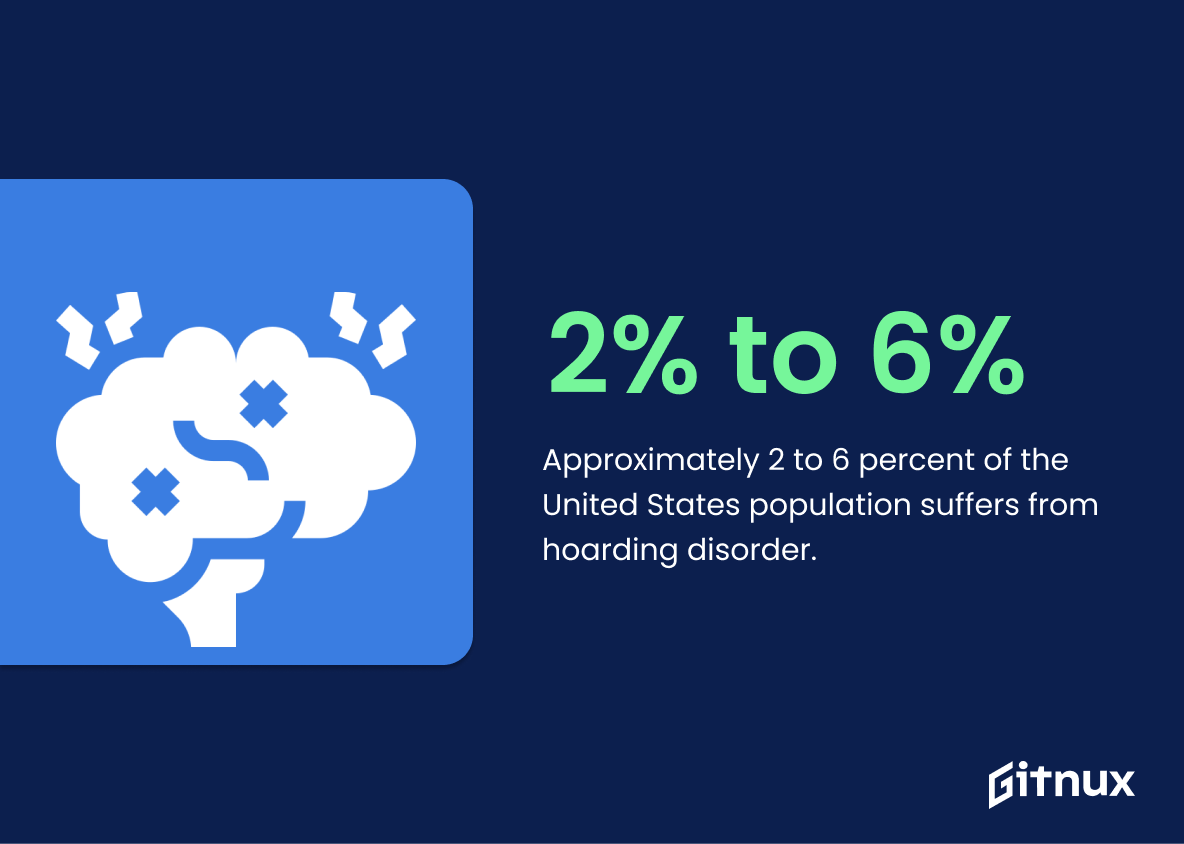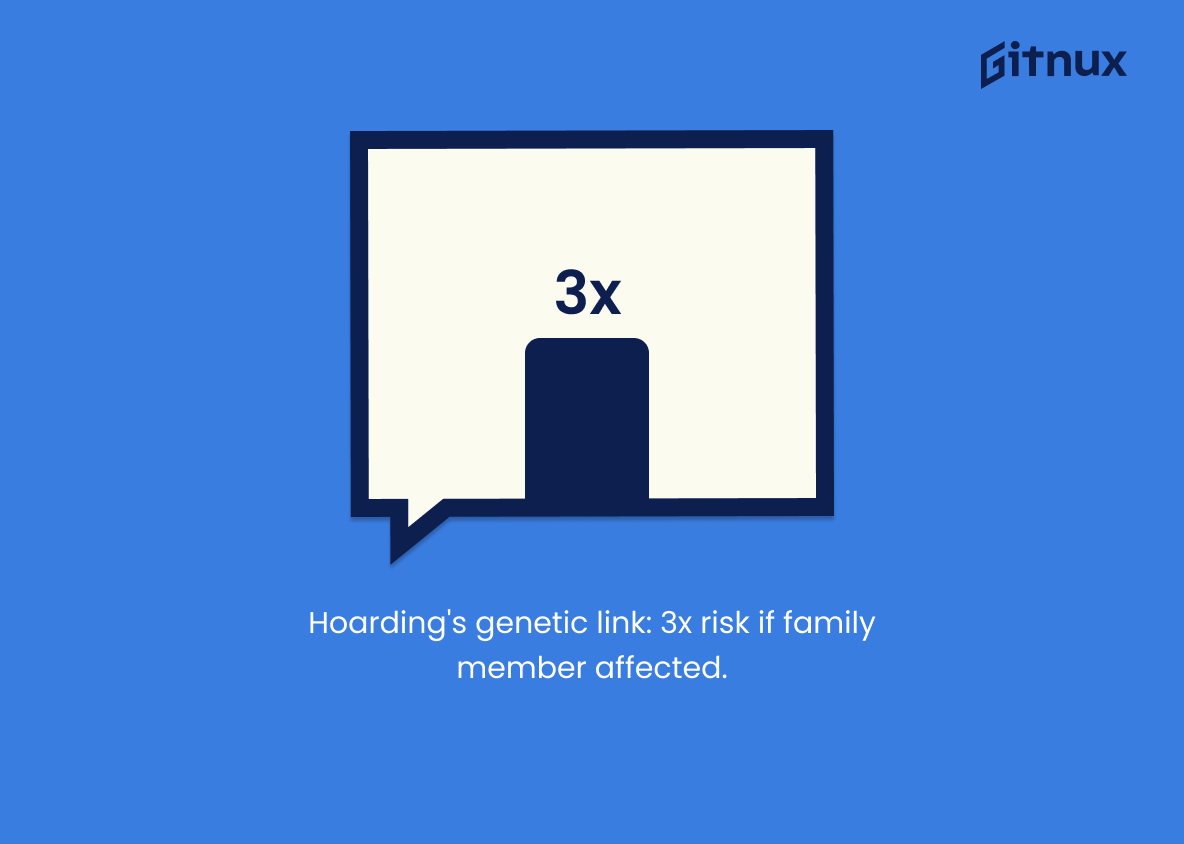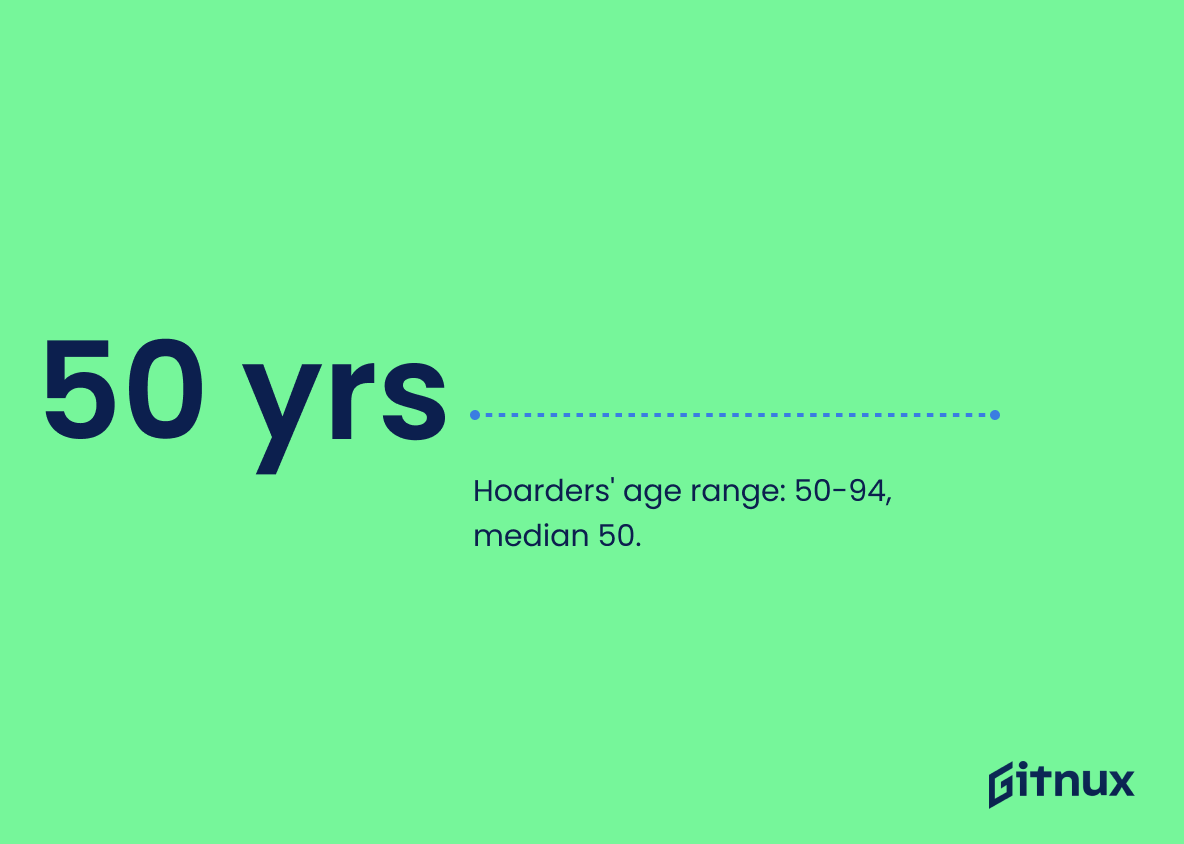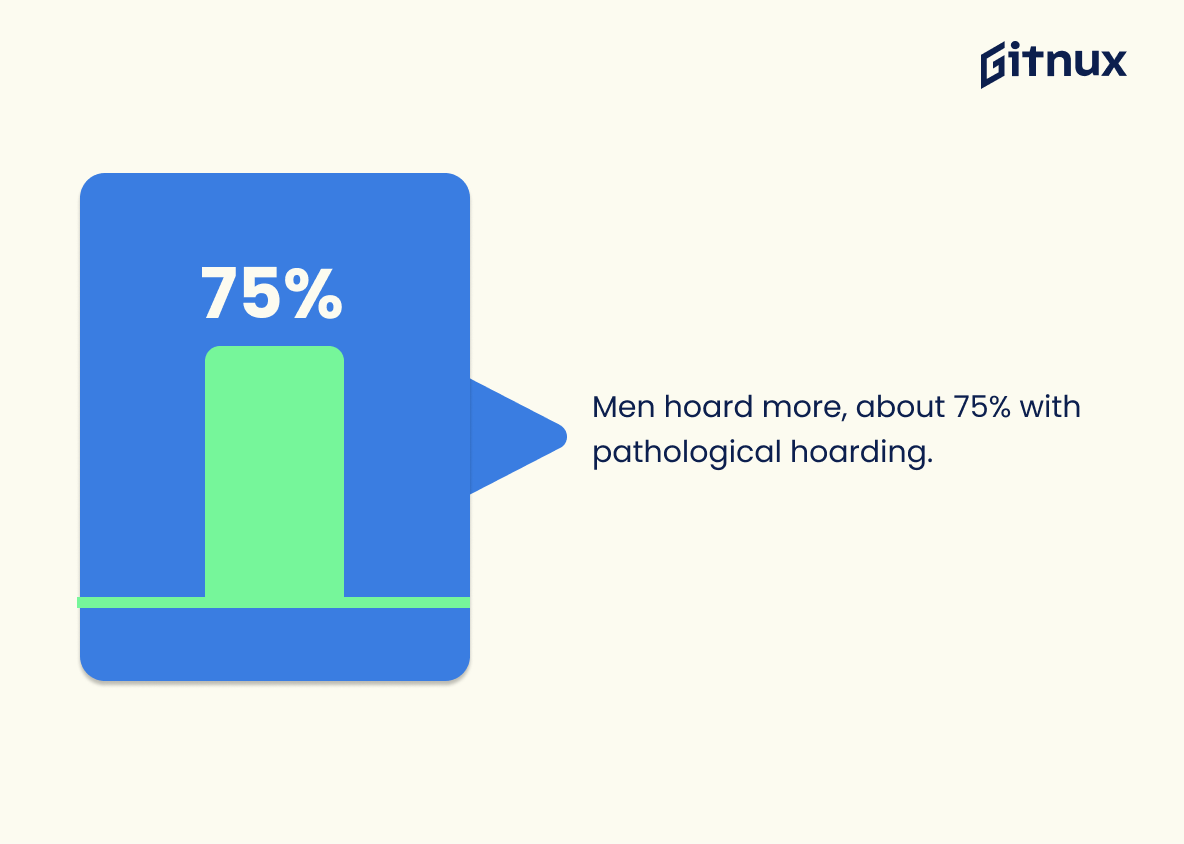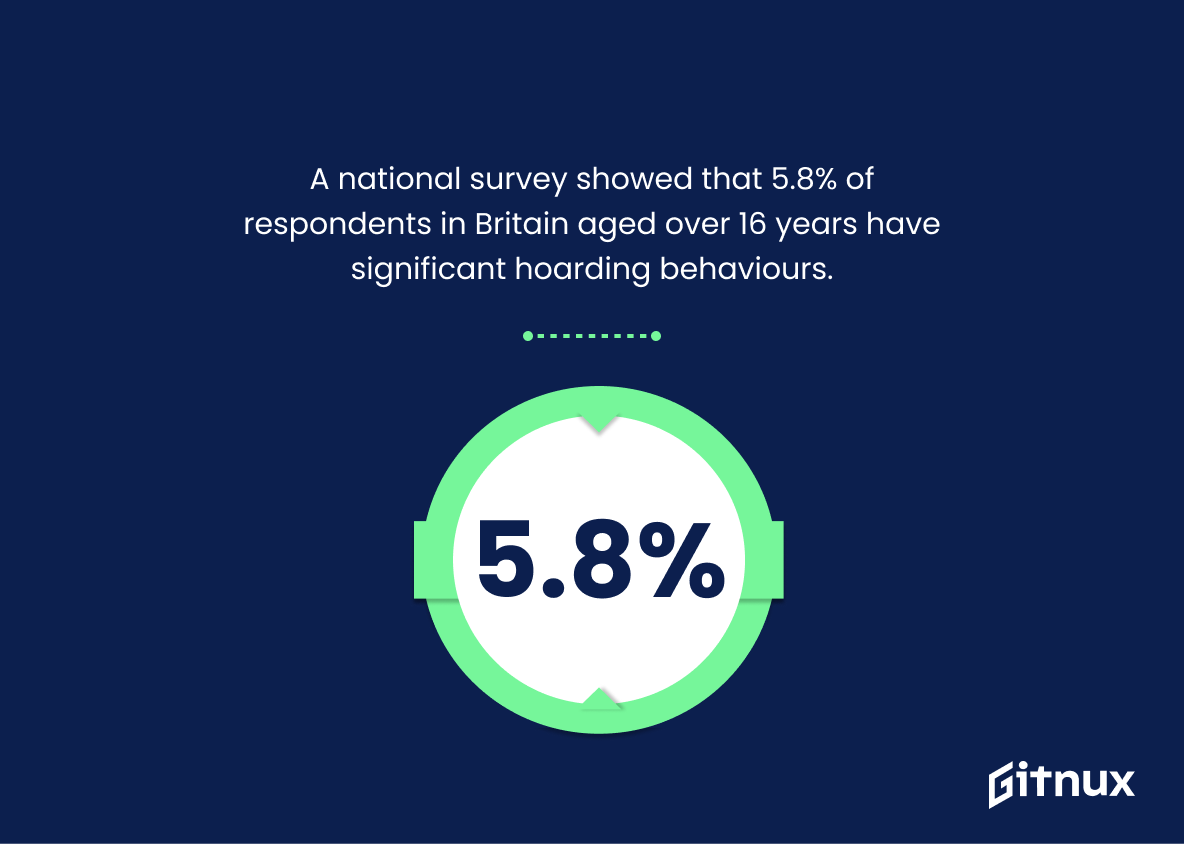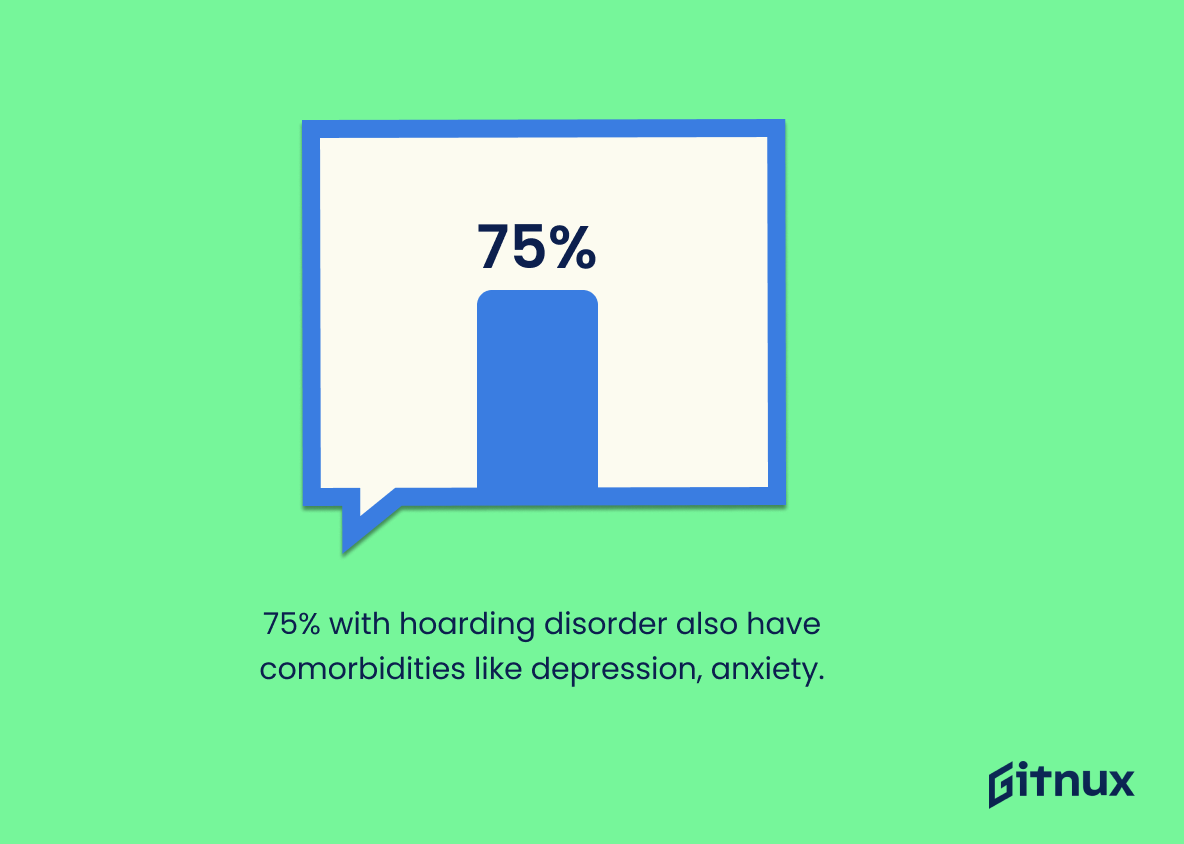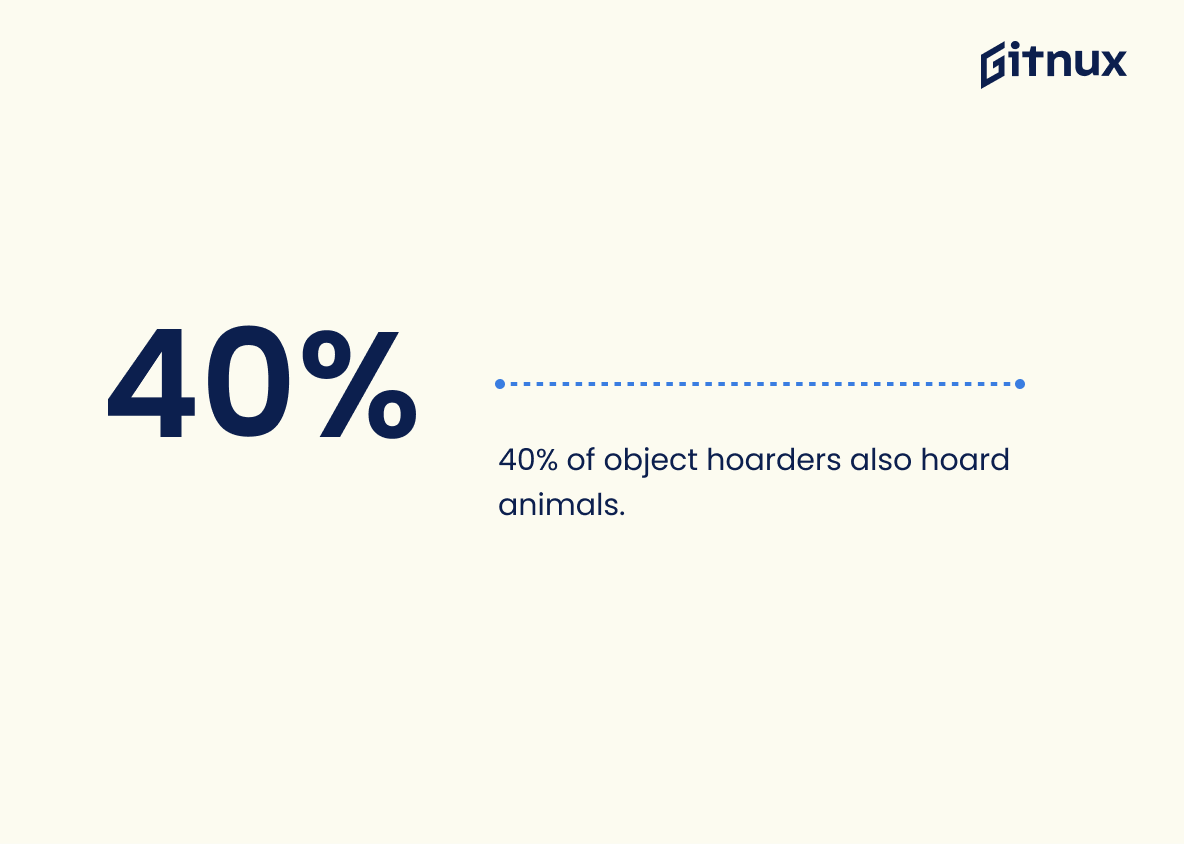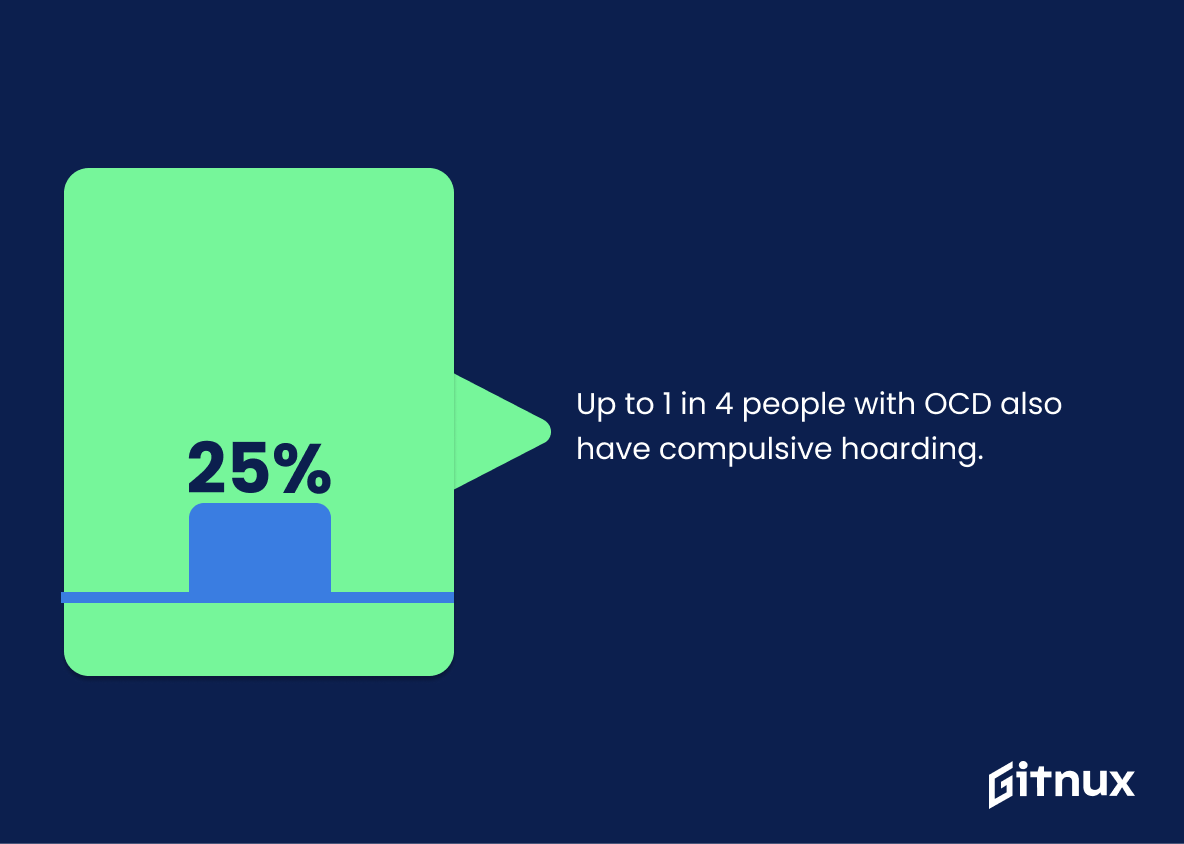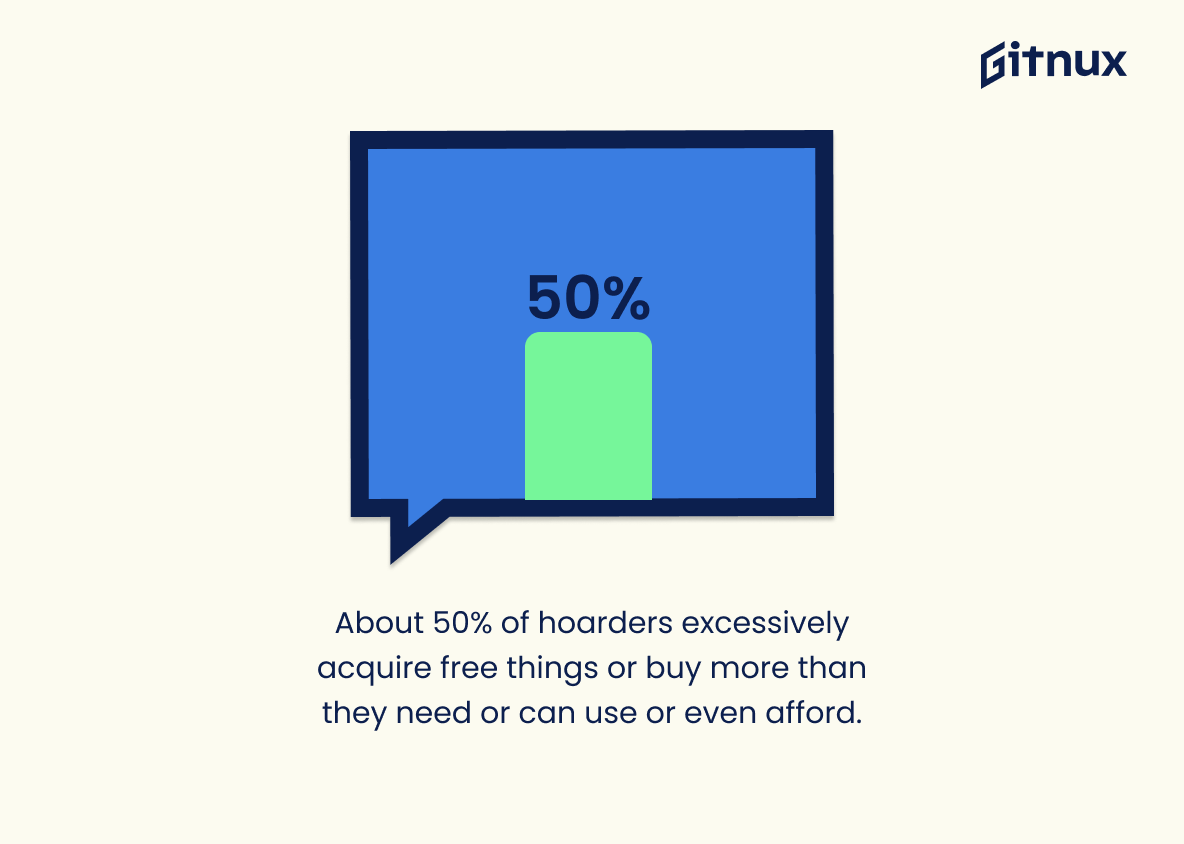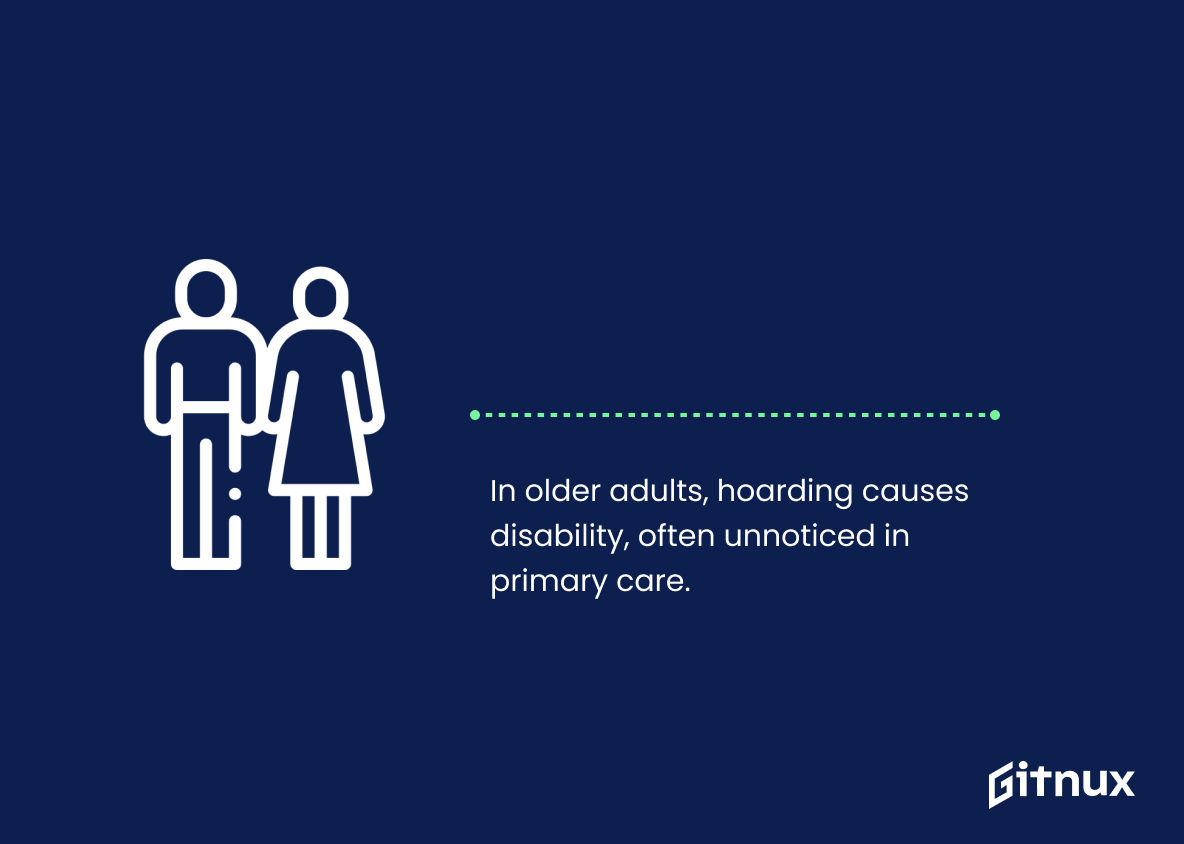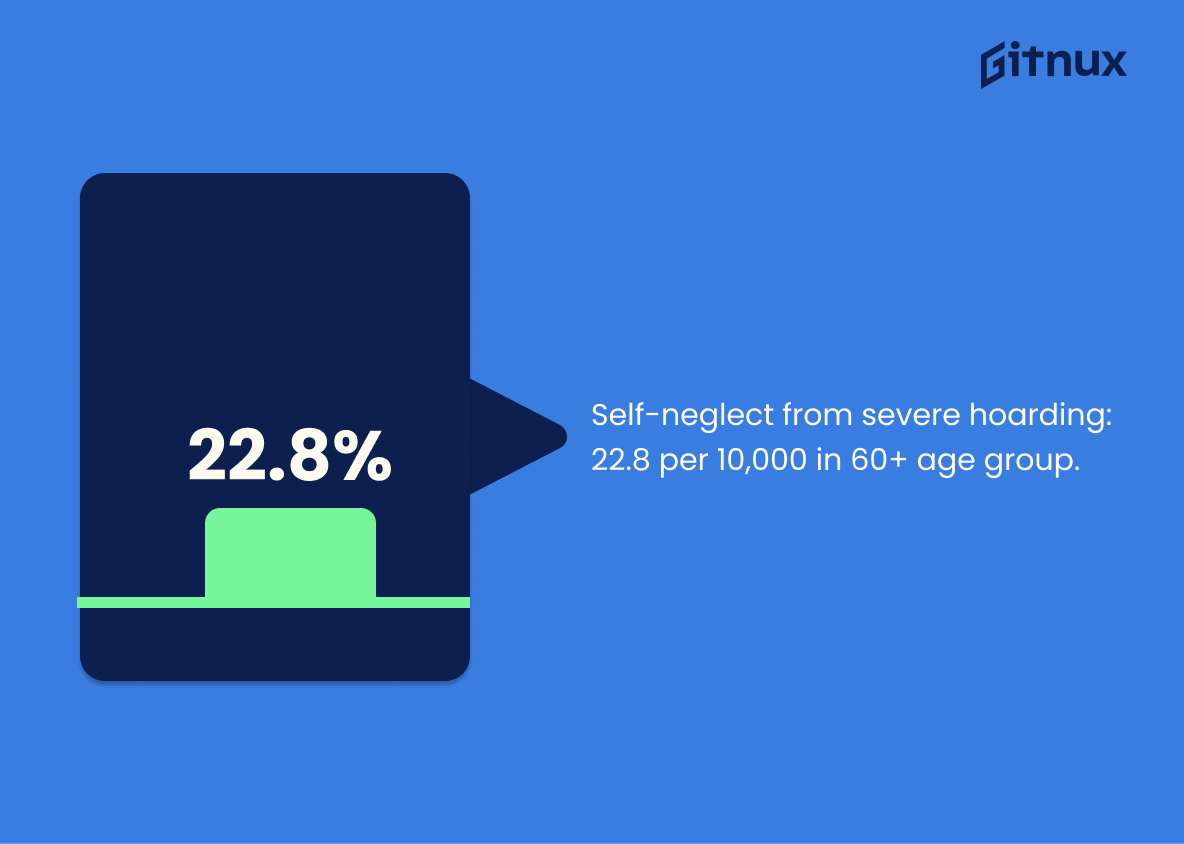Welcome to our illuminating dive into the world of hoarding, a behavior that affects a significant proportion of the global population and extends beyond merely an affinity for clutter. This blog post will introduce you to the intriguing, and often alarming, numbers behind hoarding – a clandestine condition that remains largely misunderstood. Drawing from reliable sources, we will unpack hoarding statistics and shed light on the prevalence, impacts, and intricacies of this complex disorder. As we dissect the numbers, we aim to raise awareness, spark conversations, and debunk the stereotypes surrounding this issue. Grab your explorer’s hat as we venture into the analytical side of hoarding and uncover the story told by data.
The Latest Hoarding Statistics Unveiled
Approximately 2 to 6 percent of the United States population suffers from hoarding disorder.
When delving into a discussion about Hoarding Statistics, the piece of data stating ‘Approximately 2 to 6 percent of the United States population suffers from hoarding disorder’ undoubtedly holds a central role. It shines a light on the unanticipated enormity of the issue, painting a vivid sketch of how widespread hoarding has become in the U.S. It gives a numerical touch to the abstract concept of hoarding disorder, breathing life into the scope of the challenge and prompting readers to ponder the social, mental, and economic implications it might be unleashing. This figure isn’t just a number, it serves as a catalyst for understanding the depth and breadth of hoarding, setting the stage for a compelling dialogue about this mental disorder in our society.
Hoarding can run in families and has a genetic component; individuals with a first-degree relative who has hoarding disorder are three times more likely to develop hoarding.
Unpacking this nugget of data unveils the profound power of genetics and family ties in propelling the incidence of hoarding within familial lines. It casts a spotlight on the heightened susceptibility – a trifold increase, in fact – of individuals with close kin suffering from hoarding disorder, to undergo the same plight. Pondering on this statistic grants readers an in-depth understanding not only on the complexity of the hoarding behavior, but, more importantly, arms them with a tool to preemptively act, seek appropriate intervention, or foster a deeper understanding if they find themselves part of families wrestling with this issue.
Individuals affected by hoarding disorder have been found to be between 50 and 94 years old, with a median age of 50.
In the context of a blog post about Hoarding Statistics, the colorful tapestry of ages affected by hoarding disorder paints a striking picture. This statistic is like a lighthouse in the murky sea of data, exemplifying the broad age range that hoarding can impact, from half-centurions to those nearing the full century mark. Remarkably, the median age of 50 creates an interesting midpoint, hinting that hoarding disorder may not be solely a problem of the elderly, as common perception might lead us to believe. Additionally, it convinces us to reconsider any stereotypes we may harbor about it being a disease primarily of the young. By considering this statistic, we can shape our understanding and strategies related to hoarding in a way that acknowledges the vast spectrum of those affected.
Men are more likely to hoard than women, representing around 75% of people with pathological hoarding.
Shedding light on this intriguing revelation about hoarding and gender, our deep-dive into hoarding statistics reveals a surprising twist – men are recorded to be the predominant culprits. Quite a substantial chunk of the hoarding pie, around 75%, is claimed by men. This fact holds great importance in our exploration, giving us a perspective on the skewed gender distribution in pathological hoarding. It promotes a better understanding of the issue, offers potential insights for gender-specific intervention strategies, and might even trigger more targeted research in male-driven hoarding behaviors. To some, it could provide that aha moment; to others, it’s a fruitful avenue for further debate on underlying causes and the effective therapeutic measures across genders.
A national survey showed that 5.8% of respondents in Britain aged over 16 years have significant hoarding behaviours.
In the grand landscape of a blog post dedicated to the compelling world of hoarding statistics, the national survey revealing that 5.8% of Britain’s population aged over 16 years indulge in significant hoarding behaviors stands as an illuminating beacon. It provides critical insight into the prevalence and the scale of this intriguing behavioral phenomenon within the British context. This figure leaves indelible marks on multiple aspects – it signifies that a notable proportion of the British population is influenced by this behavior, impacting various socio-economic and health-related factors. Furthermore, it underscores the imperative need for targeted intervention strategies and effective support mechanisms. The richness of this statistic enhances the overall tapestry of the article by engaging the reader with a quantifiable and relatable perspective of hoarding issues right at their doorstep.
The estimated prevalence of severe hoarding in older adults ranges from 2% to 5%.
Diving deeper into the world of hoarding statistics, one may be surprised to discover that an estimated 2% to 5% of older adults succumb to severe hoarding. This understanding holds a mirror up to the reality of hoarding, reminding us that its clutches can often grip those in the advanced stages of their lives. In a blog post that peels back the layers of hoarding statistics, this data not only elevates our comprehension of the issue’s severity but also propels us to think critically about its implications, particularly within the older demographic.
About 75% of people with hoarding disorder have a comorbidity with another mental disorder, such as depression, social anxiety, or generalized anxiety disorder.
In sifting through the clutter of hoarding statistics, a striking signpost directs our attention to the intricate relationship between hoarding and other mental conditions. Unpacking the complex character of this disorder, we discover that roughly 75% of individuals wrestling with hoarding issues are also grappling with another mental disorder, such as depression, social anxiety, or generalized anxiety disorder. This highlights the interconnected webs of mental health and emphasizes that hoarding cannot simply be viewed in isolation. Such information adds layers of understanding, offering insight into potential influencing factors of hoarding behavior and therapy outcomes. It accentuates the need for a comprehensive, empathetic approach to treatment, shaped by the realization that our minds are multifaceted landscapes, where one condition can cast long shadows on others.
40% of object hoarders also hoard animals.
Unraveling the thread of intertwined compulsive behaviors, the intriguing revelation that a significant 40% of those accumulating material possessions excessively also hoard animals, opens new dimensional insights for our understanding of hoarding. This unexpected correlation demonstrates that hoarding is not just limited to lifeless objects; rather a large number are compelled to clutter their lives with sentient beings as well. Extrapolating from this statistic, it provokes deeper analysis and consideration regarding the more nuanced psychological patterns underlying hoarding, broadening the landscape of potential interventions and treatments. Furthermore, acknowledging this fact underpins the crucial need for animal welfare involvement where hoarding behaviors are recognized, underscoring the interconnectedness of social issues. This generously contributes to an all-rounded discussion of hoarding in our blog post on Hoarding Statistics.
Up to 1 in 4 people with OCD also have compulsive hoarding.
Unraveling this statistic allows readers to appreciate the profound relationship between Obsessive Compulsive Disorder (OCD) and hoarding. Indeed, the statistic paints an intertwined portrait of these two conditions, offering key insights for those grappling with hoarding issues. Notably, it highlights the scope and intricacy of hoarding, suggesting that for a significant proportion of individuals with OCD, their compulsive need to hoard also rules their life. Thus, navigating through this statistic paves way not only for a deeper understanding of hoarding as a phenomenon, but also its intricate reciprocal relationship with OCD. This bolsters its significance in a blog post about Hoarding Statistics, as it establishes a compelling context for discussion and underscores the necessity for inclusive and comprehensive strategies when addressing these concerns.
In a study of 217 people who identify as hoarders, 75% were overweight or obese, which suggests a link between hoarding and obesity.
Shining a spotlight onto the dense cloud of hoarding statistics, this fascinating revelation trails an unexpected correlation path. The data illustrates that out of a group of 217 people identifying as hoarders, a significant 75% population were classified as overweight or obese. This unearths a potential, intriguing linkage of hoarding behavior with obesity or overweight tendencies. This statistic is like a treasure trove for hoarding-discussions, studded with implications on behavorial aspects, mental health correlations, lifestyle factors among hoarders, making it an essential piece of the broader hoarding jigsaw puzzle.
The first public health study of hoarders, conducted in 2008, found that hoarders were 3 times more likely to be overweight than non-hoarders.
Drilling down into this 2008 public health research provides a significant perspective on the relationship between hoarding and health outcomes, offering a new lens through which we can understand the life of hoarders. The striking revelation that hoarders are thrice as likely to be overweight compared to non-hoarders unravels an unexpected facet of their physical struggles.
This correlation compels us to delve beyond the seemingly cluttered surface of hoarding behaviour. The data paints a picture of underlying issues pointing out that hoarding doesn’t just encroach space, but also invades the physical wellbeing of the individual. As health and hoarding become entwined in this complex dance, it’s crucial to consider this interaction while discussing hoarding statistics in order to offer comprehensive commentary and insights. This relationship underscores the need for integrated interventions that address both hoarding and the associated health risks.
So, when we navigate through the maze of numbers and studies that detail the life of hoarders, let’s keep in mind that each statistic, like this, is a beacon that illuminates a unique difficulty or experienced reality. By shedding light on causality and the wider implications, this information becomes a catalyst in propelling us towards a deeper and more nuanced understanding of hoarding.
About 50% of hoarders excessively acquire free things or buy more than they need or can use or even afford.
Drawing attention to the fact that around half of hoarders tend to acquire more, irrespective of their need or financial capacities, paints a vivid image of the intensity of their compulsion. This numeric insight not only quantifies the hoarding phenomenon but also helps to underscore the severity and complexity of this behavior. It challenges the readers to see beyond the cluttered houses, directing them towards the harder truth that these individuals sometimes navigate financial troubles as a result of their hoarding habits. This statistic therefore acts as a critical data point that explicates on the multi-dimensional impacts of hoarding. It forms a crucial thread in the complex tapestry of facts unraveling the reality of hoarding, enabling the readers to understand it as a serious issue that extends beyond mere cluttering.
Among older adults, hoarding disorder is associated with significant disability, but it goes largely unnoticed in primary care settings.
Unveiling the importance of this statistic offers a pivotal insight into the broader narrative of hoarding. It highlights an intriguing paradox, displaying how prevalent and detrimental hoarding disorders can be, particularly among older adults, while simultaneously shedding light on its relative invisibility in primary healthcare environments. In essence, it underscores both the silent burden of hoarding disorders and the crucial need for enhanced awareness and support infrastructure within our healthcare system. It acts as an urgent call to action, inviting readers to reassess their perceptions and prompt discussions that could pave the way for improved recognition and intervention strategies. In this way, our blog post about Hoarding Statistics becomes a potent force, seeking not only to inform, but also to inspire change.
The prevalence of self-neglect due to severe hoarding is 22.8 per 10,000 people in the 60 years and older age group.
Shedding light on the quoted statistic, it’s akin to planting a flag amidst the sprawling landscape of hoarding statistics. “The prevalence of self-neglect due to severe hoarding is 22.8 per 10,000 people in the 60 years and older age group,” draws attention to the intensity and gravity of the issue among our elders. It illuminates a poignant situation as our respected seniors, having seen a lifetime, now face the psychological challenge of hoarding in their twilight years. This figure not only underscores the urgency to develop interventions tailored to this age group, but also fuels further conversation about mental health in older age, a topic often shrouded in silence.
In a 2002 study, at least three fires occurred per week in U.S. due to hoarding issues.
Unveiling the magnitude of the rippling effects of hoarding, a 2002 study unearthed a startling reality – each week in the U.S saw a minimum of three fires ignited by hoarding predicaments. These findings underscored the urgency of tackling hoarding behaviors, not solely for individual well-being but for public safety as well. For a deep-dive into hoarding statistics on a blog post, these numbers serve as a stark reminder of the tangibly volatile consequences of hoarding, extending beyond the silent suffering of individuals to become a societal problem fraught with danger. Surely, these are more than mere numbers, they are a call to action.
Nearly 80% of animal hoarders have diseased, dying, or dead animals on their properties.
Highlighting this unsettling percentage of animal hoarders with diseased, dying, or dead animals on their properties paints a stark picture of the severe impacts of this psychological disorder. It underscores the urgent need for public awareness and integration of mental health and animal control services. Furthermore, it underlines that not only is the individual hoarder adversely affected, but the lives of numerous animals are placed under dire distress. Through this statistic, the blog post cocoons the readers in a reality check, challenging their perceptions and fostering a deeper understanding of the intensity and urgency associated with this condition.
Conclusion
In light of these staggering statistics, it’s evident that hoarding is a widespread issue that affects millions of individuals and communities globally. Understanding these figures underscores the importance of advocating for more resources, education, and support for individuals struggling with hoarding disorder. By becoming more aware of this complex issue, the public can play an instrumental role in debunking myths, reducing stigmatization and contributing to solutions that can significantly improve the lives of those affected by hoarding. Let’s use these statistics as catalysts to drive change and foster more compassionate, efficient responses to hoarding.
References
0. – https://www.www.apa.org
1. – https://www.www.mayoclinic.org
2. – https://www.www.psychiatrictimes.com
3. – https://www.www.ocduk.org
4. – https://www.www.news.wisc.edu
5. – https://www.www.animalsheltering.org
6. – https://www.www.fireengineering.com
7. – https://www.www.verywellmind.com
8. – https://www.www.aspca.org
9. – https://www.www.ncbi.nlm.nih.gov
10. – https://www.www.nhs.uk
11. – https://www.www.webmd.com
